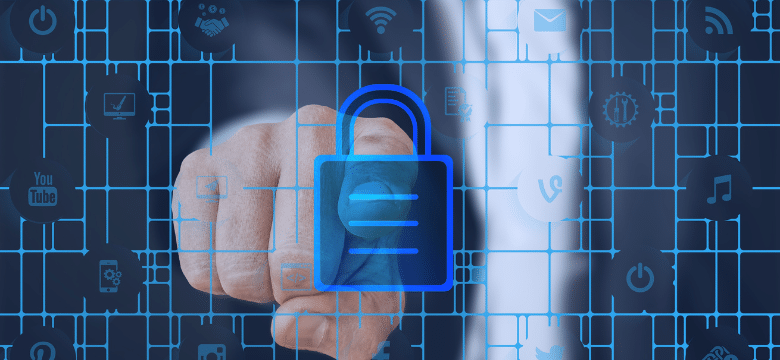








In 2024 alone, U.S. companies experienced over 2,000 major cyberattacks, resulting in estimated damages exceeding $18 billion, according to the Cybersecurity & Infrastructure Security Agency (CISA). These attacks targeted everything from critical infrastructure to high-profile AI startups, highlighting the growing sophistication and frequency of modern cyber threats.
As the U.S. tech sector pushes deeper into cloud computing, artificial intelligence, and global digital services, its cybersecurity posture is being tested like never before. This article examines the most pressing cybersecurity vulnerabilities threatening U.S. technology firms in 2025 and explores effective strategies to mitigate these risks.
Cyber threats have evolved in both volume and complexity, with ransomware, phishing, and state-sponsored exploits surging across all industry verticals. According to IBM’s X-Force Threat Intelligence Index 2025, ransomware incidents increased by 27% year-over-year, while phishing remains the most common vector for initial access in data breaches.
Particularly vulnerable sectors include:
The convergence of cloud-first strategies and AI adoption has expanded the attack surface, creating new avenues for exploitation.
Software supply chain vulnerabilities have emerged as a critical concern. The infamous SolarWinds breach underscored how attackers can compromise thousands of organizations through a single vendor. In 2025, the focus has shifted toward open-source ecosystems — particularly widely used packages on NPM and PyPI.
Attackers are inserting malicious code into commonly downloaded libraries, which are then unknowingly included in enterprise applications. The decentralized nature of open-source projects and dependency sprawl makes this an especially difficult threat to contain.
With the continued migration to AWS, Azure, and GCP, cloud misconfigurations remain one of the most frequent causes of data leaks. Common issues include publicly exposed storage buckets, mismanaged identity permissions, and insufficient logging.
As organizations adopt multi-cloud architectures, they often lack standardized security policies across environments, leaving inconsistencies for attackers to exploit. Moreover, many companies still assume that cloud providers handle security completely — a misconception known as the “shared responsibility model” gap.
The use of zero-day vulnerabilities has surged, particularly in campaigns attributed to nation-state actors. High-value targets in government and defense technology have been compromised by exploits unknown to the software vendors themselves.
Legacy systems still in use across many enterprises present additional challenges. Even when patches are released, delays in deployment due to operational dependencies create dangerous windows of opportunity for attackers.
Cybercriminals are increasingly leveraging generative AI to create phishing campaigns that are hyper-personalized and more convincing than ever before. AI-generated emails now mimic writing styles, linguistic nuances, and even emotional cues to bypass traditional filters.
Simultaneously, deepfake technologies are being used in real-time to impersonate C-suite executives, particularly in finance and HR. These deepfakes have already enabled successful wire fraud and internal data theft, as audio and video forgeries deceive even well-trained staff.
Despite the advancement in tech defenses, human error remains a top cause of security breaches. Weak passwords, negligent data handling, and susceptibility to phishing continue to open doors for attackers.
According to a 2025 Proofpoint report, 43% of cybersecurity incidents involved an internal actor — either through malicious intent or negligence. This emphasizes the need for continuous employee training and strict access control mechanisms.
Learn more: Data Security in the Cloud: Cybersecurity for Cloud-Based Businesses
Recent months have seen several high-profile cybersecurity events:
Microsoft faced a breach via a compromised OAuth app, allowing unauthorized access to sensitive customer environments.
A U.S. federal agency suffered a ransomware attack that disrupted services for over three weeks, attributed to a variant of the Black Basta ransomware group.
A leading AI startup had its model weights and training datasets leaked, impacting competitive advantage and raising IP protection concerns.
These incidents serve as case studies in the interconnectedness of Cybersecurity Vulnerabilities — from third-party app misuse to misconfigured environments and employee missteps.
To combat today’s sophisticated threat landscape, tech companies must evolve their security frameworks holistically:
Organizations should abandon perimeter-based defenses in favor of zero trust models, where every user and device must be authenticated and continuously validated — regardless of network location.
Security Operations Centers (SOCs) must embrace real-time threat feeds, behavioral analytics, and AI-assisted threat hunting to proactively identify and neutralize threats.
The use of AI for cybersecurity is expanding. Tools now autonomously detect anomalies, respond to incidents, and even quarantine malicious behavior — reducing human response time from hours to seconds.
Employee Upskilling and Awareness
Regular phishing simulations, role-specific training, and a culture of security accountability are vital. Employees are often the first line of defense — or the first point of failure.
You may enjoy: Combating Online Fraud: Cybersecurity for E-commerce Businesses
The cybersecurity vulnerabilities facing U.S. tech firms in 2025 are both technical and human. From sophisticated zero-day attacks and deepfake impersonations to overlooked cloud misconfigurations and insider errors, the threat landscape continues to expand.
Organizations can no longer afford reactive security. Proactive investment in modern defenses, cultural transformation, and continuous innovation in cybersecurity practices are non-negotiable.
Tags
Stay ahead in a rapidly changing world with our monthly look at the critical challenges confronting businesses on a global scale, sent straight to your inbox.